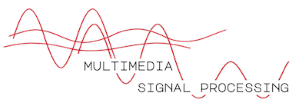Professor Ana Rita Teixeira of the IPC – ESEC and Aveiro University will be visiting the MMSP laboratory during next week and for the occasion she will held a Seminar on “Brain Computer Interaction – Study cases in cognitive load tasks”.
Here is the abstract of her talk, which we are very looking forward to hear!
Brain-Computer Interface (BCI) is a way of interaction between individuals and computers by not using any muscle, controlled through individuals’ brain activity captured with specific equipment. BCI is used to quantify Central Nervous System (CNS) activity, converting it to artificial output that is then used to replace, restore, enhance, supplement, or improve natural CNS output. Through the acquisition of brain signals, BCI identifies patterns and produces actions based on these patterns, allowing users to interact with the environment without having to use peripheral nerves and muscles. Brain computer interfaces (BCI) have been applied in several fields of research from medical field, smart environments, Internet of Things, neuromarketing and advertisement, educational and self-regulation, games and entertainment and Security or authentication fields. BCIs depend on sensors and associated hardware whose function is to acquire brain signals. To this purpose, we resorted to a device using the non-invasive EEG (electroencephalography) technique. The application of EEG based systems in learning contexts is still not common, the number of studies on this topic is relatively small and the studies that can be carried out have enormous potential in this area. However, before moving on to a complex field such as education, we carried out a set of preliminary studies that analyze individuals performing tasks with some cognitive load. Using the EEG signal and BCI devices, we evaluated several parameters of interest (Attention, Concentration, Fatigue, Immersion and Stress). This work allowed to access several parameters, through a series of studies, using devices with a reduced number of channels, in different types of tasks. The tasks analyzed were individuals driving and operating other side distractive tasks; individuals using different computer games with and without sound; individuals engaged in a programming problem-solving oriented task activity; individuals comparing different typefaces or colors in complex figures and individuals performing the Raven matrices test.
See you on September 15th, 2022 at 10:30 am, Room T24 – Abacus Building (U14) 1st floor of the Department of Informatics, Systems and Communication, University of Milano-Bicocca.
Refer to Professor Gasparini for more details.
